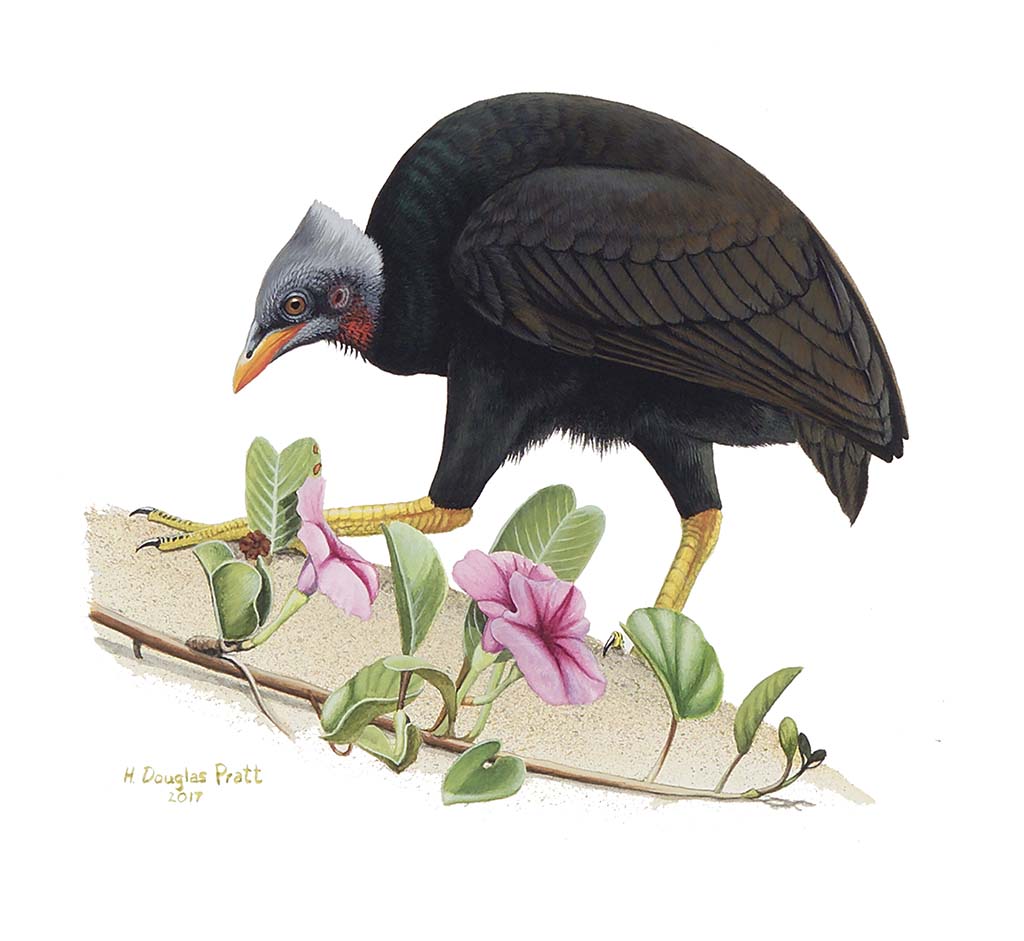Sasangat: An endangered species

Scientific Name: Megapodius laperouse (Family MEGAPODIDAE)
Common Name: megapode, incubator bird
CHamoru Name: Sasangat
Habitat and Natural History: The megapode lives in limestone forests and coconut groves. Eggs are not tended by the parents but incubated in mounds of decaying vegetation or in volcanic ash which generate heat. The young are able to run and fly immediately upon hatching. They are omnivorous, feeding on insects, crabs, and plant material.
Description: A chicken like bird about 15 inches ( 38 centimeters) tall. It flies well. The body is brownish-black with a grayish crest. The large feet are yellow. The bill is yellow with red skin showing through the feathers at its base. Unlike a chicken, the tail is short. Males and females look the same.
Range: Palau; Guam; Northern Mariana islands
Current Status: The megapode is endangered in the Mariana Island chain. It has been extirpated from Guam and Rota where the numbers declined in the 19th and 20th centuries. Remnant populations are believed to be on Aguigan and are occasionally observed on Tinian in the Northern Marianas. A small number of birds are present on Saipan and were possibly reintroduced there. Larger populations exist on the isolated smaller islands north of Saipan though their exact numbers are unknown.
Threats: The main threats are habitat destruction, over hunting and predation by pigs, rats, cats and hilitai (monitor lizards). Another threat is volcanism which produces ash that covers nesting and foraging areas.
